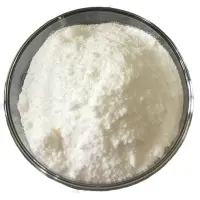-
Categories
-
Pharmaceutical Intermediates
-
Active Pharmaceutical Ingredients
-
Food Additives
- Industrial Coatings
- Agrochemicals
- Dyes and Pigments
- Surfactant
- Flavors and Fragrances
- Chemical Reagents
- Catalyst and Auxiliary
- Natural Products
- Inorganic Chemistry
-
Organic Chemistry
-
Biochemical Engineering
- Analytical Chemistry
-
Cosmetic Ingredient
- Water Treatment Chemical
-
Pharmaceutical Intermediates
Promotion
ECHEMI Mall
Wholesale
Weekly Price
Exhibition
News
-
Trade Service
The chemical industry plays a vital role in our daily lives, providing a wide range of products that we use in our homes, workplaces, and various industries.
However, the production and use of these chemicals also pose potential risks to human health and the environment.
One of the key challenges in the chemical industry is ensuring the safety of the products that are manufactured and used.
Diacerein is a chemical that is commonly used in the pharmaceutical industry.
It is a phosphate esterase inhibitor that is used to treat various medical conditions, including rheumatoid arthritis and systemic lupus erythematosus.
However, the safety of diacerein has been a subject of concern in recent years.
In this article, we will explore the potential risks associated with diacerein and discuss how the chemical industry can ensure the safety of this and other chemicals.
Potential Risks of Diacerein
The use of diacerein has been linked to various side effects, including skin reactions, nausea, and gastrointestinal problems.
In some cases, these side effects can be severe and may require hospitalization.
Furthermore, there is limited information available on the long-term effects of diacerein use, which has raised concerns about its safety.
Diacerein is also known to be nephrotoxic, meaning it can cause damage to the kidneys.
This has been observed in animal studies and has raised concerns about the potential risks to human health.
Additionally, diacerein has been shown to induce fetal toxicity in animals, which raises concerns about its use during pregnancy.
Ensuring Safety in the Chemical Industry
To ensure the safety of chemicals like diacerein, the chemical industry must implement robust safety measures throughout the product lifecycle.
This includes the development, manufacturing, distribution, and disposal of chemicals.
During the development stage, companies must conduct rigorous safety testing to ensure that the chemical is safe for use.
This includes testing for potential toxicity, carcinogenicity, and other adverse effects.
Additionally, companies must ensure that the manufacturing process is safe and that workers are adequately protected from potential hazards.
Once the chemical is on the market, the industry must monitor its use and any potential side effects.
This includes collecting and analyzing data on adverse effects, as well as monitoring for any emerging risks.
Companies must also provide clear and accurate information about the safe use of the chemical to workers, consumers, and other stakeholders.
Furthermore, the chemical industry must ensure that the disposal of chemicals like diacerein is done in a safe and responsible manner.
This includes ensuring that the chemicals are properly stored and transported to minimize the risk of environmental contamination.
Companies must also provide information to waste management companies to ensure that the chemicals are disposed of in a safe and responsible manner.
Conclusion
Ensuring the safety of chemicals like diacerein is a critical responsibility of the chemical industry.
The potential risks associated with the use of this chemical highlight the need for robust safety measures throughout the product lifecycle.
By investing in safety testing, monitoring, and responsible disposal, the industry can help to ensure that its products are safe for use and do not pose a risk to human health or the environment.
It is essential that the chemical industry remains committed to safety and continues to invest in the development of new safety measures and technologies.
This will help to ensure that the benefits of chemicals like diacerein can be realized while minimizing the potential risks.
Ultimately, the safety of chemicals like diacerein is a shared responsibility between the industry, regulators, and the public, and requires a collaborative approach to ensure that chemicals are used safely and responsibly.







